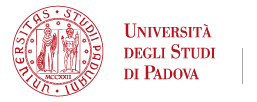

MARIA BERICA RASOTTO
Title: Professore ordinario
SSD: BIO/06 - Comparative Anatomy and Citology
Address: VIA U. BASSI, 58/B - PADOVA
Phone: 0498276191
E-mail: mariaberica.rasotto@unipd.it
Curriculum
My research focuses on the reproductive biology of fishes with emphasis on behavioural ecology, sexual pattern, morphology of the reproductive apparatus, and development of secondary sexual traits. I combine field and lab work (ejaculate analyses, immune system analyses, histology and histochemistry) to study:
- Multiple male traits and female choice
- Antimicrobial production and male parental care
- The influence of sperm competition in goby morphology, behaviour, and ejaculate investment
- Nest choice and egg characteristics in demersal spawners
In addition, to contribute to fish management and conservation, I also study mediterranean fish community structure and ecology, using non-destructive methods and fishery data.
The experimental part of my research is mainly based at the Umberto D'Ancona Hydrobiological Station in Chioggia.
Research area
My research focuses on the reproductive biology of fishes with emphasis on behavioural ecology, sexual pattern, morphology of the reproductive apparatus, and development of secondary sexual traits.
I take an interdisciplinary approach to investigate the evolution of complex breeding systems, reproductive tactics, and decision-making in fish.
In particular, using a combination of field experiments and lab studies(ejaculate analyses, immune system analyses, histology and histochemistry), I study:
- Male multiple sexual traits and female choice
- Fertilization dynamics and the influence of sperm competition
- Nest choice and egg characteristics in demersal spawners.
Field work is mainly based at the Umberto D'Ancona Hydrobiological Station in Chioggia.
In addition, to contribute to fish management and conservation, we also study mediterranean fish community structure and ecology, using non-destructive methods and fishery data.
Proposals for thesis
For the thesis projects of the three-year degrees (Degree Course in Biology and Nature Sciences) I am available to follow students in the deepening of topics related to:
- mating systems
- parental care
- sexual selection
- hermaphroditism
- conservation and sustainable management of marine species
- evolution of vertebrates
For the Master's thesis (in Evolutionary Biology, Marine Biology, etc.) the following topics are available:
1. Post-copulatory sexual selection: the influence of sperm competition in ejaculate composition and performance
The aim of this study is to analyze how the competition occurring when the ejaculates of two or more males compete to fertilize the same group of eggs (i.e. sperm competition)has in modeling 1) the number and quality of sperm; 2) the quantity and composition of the seminal fluid. These researches use, as study models, lagoon and marine gobies where males adopt alternative reproductive tactics: with larger ones building a nest, courting females, and performing parental care to the eggs while the younger/smaller males parasitize the spawning the nesting males, releasing sperm while a mating is in progress.
The work takes place both in the field and in the laboratory and is base at the Hydrobiological Station of Chioggia, where students can be hosted in the guesthouse and find all the equipment for field work (boat,diving gear, etc.), for the maintenace of animals in aquaria, and for the different laboratory analyses.
2. Honesty of sexual signals in a variable environment
The aim of this theses study is to decipher the influence that environmental variability can have on the reliability of sexual signals. Theoretical models of female choice are base don the assumption that male sexual traits reliably signal aspects of male quality, thus allowing the female to gain benefits, both direct (e.g. resources) and indirect (e.g.genetic), which positively affect the offspring fitness. The environmental fluctuations could alter the reliability of sexual traits, ultimately altering the fitness of the offspring. In the current scenario of rapid environmental changes, quantifying these processes becomes crucial to predict the fate of animal populations. These researches use as study models benthic marine species with male parental care, in which the effect of the increase of temperature on the honesty of male sexual signals, on the female choice, and on the quality of the offspring will be studied.
The work takes place both in the field and in the laboratory and is base at the Hydrobiological Station of Chioggia, where students can be hosted in the guesthouse and find all the equipment for field work (boat,diving gear, etc.), for the maintenace of animals in aquaria, and for the different laboratory analyses.
Last update: 15/01/2024





